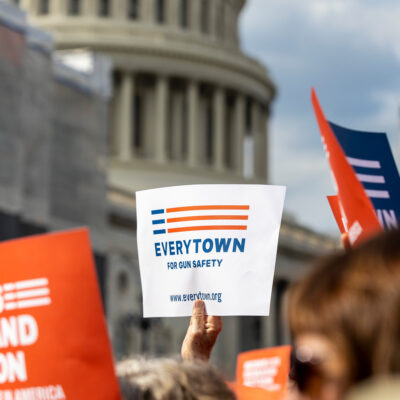Wall Street Journal: Florida Schools Don’t Want to Arm Teachers
9.9.2019
Following the Florida legislature’s reckless and unpopular decision to allow Florida teachers to be armed in schools, a Wall Street Journal analysis found that a majority of Florida schools have rejected the option to arm teachers. Florida schools are implementing evidence-based solutions rather than relying on a gun lobby policy that is ineffective and risky.
School boards and superintendents have overwhelmingly sided with educators, veterans, survivors of gun violence and volunteers with the Florida chapter of Moms Demand Action for Gun Sense in America, who spent the summer educating district leaders about the risks of arming teachers. Overall, Moms Demand Action volunteers set up 100 meetings in 43 districts across the state since January 2019. To interview a Moms Demand Action volunteer about the risks of arming teachers, don’t hesitate to reach out.
The Wall Street Journal’s Arian Campo-Flores writes:
Only seven of Florida’s 67 county school districts—Bay, Gilchrist, Lafayette, Levy, Okeechobee, Putnam and Suwannee—say they have approved or would consider arming teachers, according to a survey of school officials by The Wall Street Journal. Three others—Baker, Jackson and Okaloosa—wouldn’t say whether they have authorized the move.
…
“Teachers have a lot on their plates,” said Tamara Shamburger, chairwoman of the Hillsborough County school board, in Tampa, which voted unanimously against arming instructors. “Their focus has to be on educating their kids and not fighting off bad guys.”
…
Fedrick Ingram, president of the Florida Education Association, the state teachers union, said the policy burdens instructors with an enormous responsibility for which they have little expertise. It also could endanger students if any were to get hold of a firearm inadvertently left unguarded, he said.
Research indicates that arming teachers will make children less safe. Guns in schools are often mishandled and unintentionally discharged, even when they are carried by trained law enforcement. Several such incidents have happened across the country in just the past few months:
- In early August, two teenagers stole an AR-15 from a School Resource Officer in Tennessee.
- In April, a Texas police officer assigned to a high school in Mesquite unintentionally discharged his gun at school.
- In Milwaukee, a 10-year-old student was grazed by a bullet after a gun brought to school by an employee discharged, also in April.
- In St. Paul, Minnesota, a student found a gun in a bathroom that an employee had left unattended.
Arming teachers is also unpopular with voters; a poll from Quinnipiac University showed that a strong majority of Florida voters oppose allowing teachers or school officials to carry guns in schools, even if they are given training.
In February, Everytown for Gun Safety the American Federation of Teachers and the National Education Association released a report providing clear, data-driven guidance for lawmakers to support school-based intervention solutions, like threat assessment programs and basic security upgrades, that when combined with emergency response preparedness and comprehensive gun safety laws like responsible gun storage and strong Red Flag laws can work to intervene before shootings happen.
Sensible school safety laws work. In Los Angeles, law enforcement was able to use California’s gun storage law to remove weapons from the home of a child who threatened to bring a gun to school to shoot a classmate in November. And Maryland’s Red Flag law has allowed law enforcement to remove firearms from situations involving serious threats against at least four schools.




